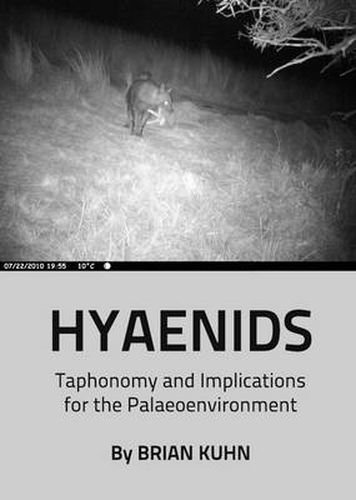Readings Newsletter
Become a Readings Member to make your shopping experience even easier.
Sign in or sign up for free!
You’re not far away from qualifying for FREE standard shipping within Australia
You’ve qualified for FREE standard shipping within Australia
The cart is loading…






It has been shown through a variety of independent studies that members of the family Hyaenidae are consummate collectors of bones at their respective dens. This in turn has been inferred upon the fossil record suggesting hyaenids as the source for a number of fossil bearing cave deposits, especially in southern Africa. The question of how to differentiate between collections made by hyaenids, hominids and other bone collecting species has also been a highly published field of study. Here we take an in depth look at the bone collecting behaviours of the three extant bone collecting members of the family Hyaenidae, Crocuta crocuta, Parahyaena brunnea and Hyaena hyaena.Paying particular attention to distinctive carnivore gnawing and fragmentation patterns left upon the bones collected, we find that not only are there differences between the species of hyaenids but also within the species. It would appear that the environmental conditions at the time of collection have a greater than anticipated impact upon the taphonomic signatures left behind by the various hyaenid species. We conclude that for any study of fossil assemblages, one must take a multi-disciplined approach and examine not only the carnivore damage, but also palaeoenvironmental factors in determining the probable collector.
$9.00 standard shipping within Australia
FREE standard shipping within Australia for orders over $100.00
Express & International shipping calculated at checkout
It has been shown through a variety of independent studies that members of the family Hyaenidae are consummate collectors of bones at their respective dens. This in turn has been inferred upon the fossil record suggesting hyaenids as the source for a number of fossil bearing cave deposits, especially in southern Africa. The question of how to differentiate between collections made by hyaenids, hominids and other bone collecting species has also been a highly published field of study. Here we take an in depth look at the bone collecting behaviours of the three extant bone collecting members of the family Hyaenidae, Crocuta crocuta, Parahyaena brunnea and Hyaena hyaena.Paying particular attention to distinctive carnivore gnawing and fragmentation patterns left upon the bones collected, we find that not only are there differences between the species of hyaenids but also within the species. It would appear that the environmental conditions at the time of collection have a greater than anticipated impact upon the taphonomic signatures left behind by the various hyaenid species. We conclude that for any study of fossil assemblages, one must take a multi-disciplined approach and examine not only the carnivore damage, but also palaeoenvironmental factors in determining the probable collector.